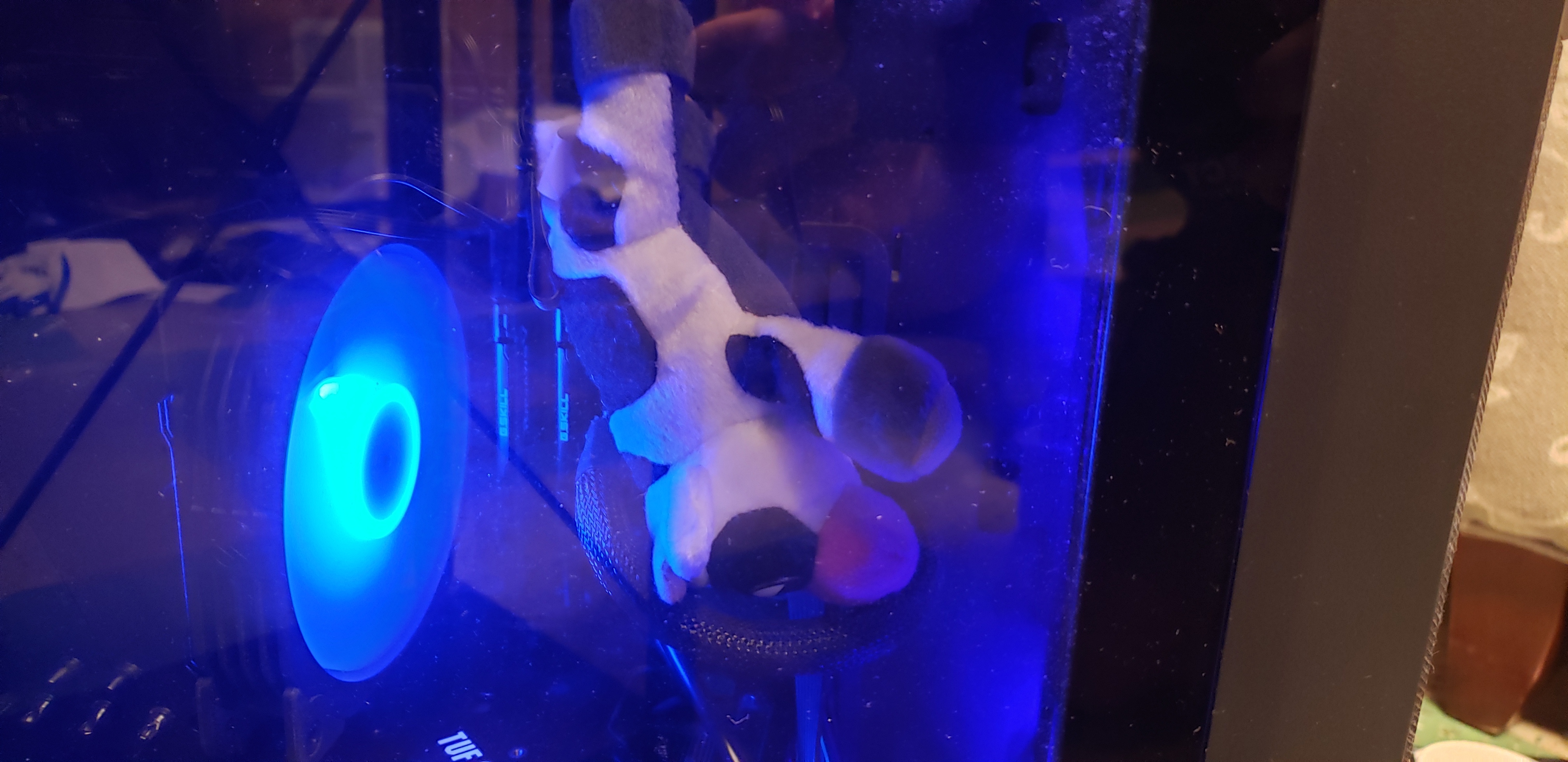So been trying out Garuda Linux for a while now (my first distro), but feel ready to try another distro. Therefore looking for a distro that suits my preferred requirements, anyone has any tips?
- Uses Wayland
- Supports flatpak
- ButterFS format
- KDE Plasma
- “Good for gaming”
Note: Got nothing negative about Garuda, I just want to explore the options out there :)—
Try openSUSE Tumbleweed
openSUSE probably has the best out of the box btrfs experience
Fedora KDE, Kinoite, or Nobara could all be of interest to you
I’d throw Bazzite in as well. It’s gaming focused like Nobara but immutable like Kinoite
Who comes up with these names 😅
check out Endeavour OS
I can second Endeavour, it’s probably the easiest entry point into Arch and it can be customized to do all the things in the list.
It runs Plasma really well, and you can get Wayland with KWin working for Plasma as well, but it’s easier to do on AMD and I have an Nvidia card.
Nobara, it’s literally all the things you mentioned above
Neat! ✨
As as hell to install too.
Throwing Debian in there. Switched from arch 6 months ago. Still running x11 because xfce doesn’t support wayland yet, but KDE does. I run amd cpu and gpu and have no compatibility issues. And with lutris/bottles/proton games run with minimal issues. Plus most every is based on Debian, so why not just use the original.
To add to this: Debian is pretty conservative in regards to package versions. The current and LTS versions usually have slightly older packages.
If you don’t mind tackling more updates, I suggest Debian Testing. That is the stable development branch for the next major release, currently rocking it with Wayland GNOME on my DELL notebook and very happy with the results.
I’ve always found testing interesting. On one hand, packages have gone through more testing and usage than with sid, but on the other hand, it could be weeks until some major bug gets fixed. Have you experienced any of the latter?
No, so far no bugs worth mentioning. All works well, apart from more incoming updates than usually on a Debian System.
The problems I ran into were mostly with GNOME and Hotkeys for Apps in Wayland. Like Shift + F12 to open a Terminal does not work reliably when set in the Terminal app, but works well when set in the Gnome Settings as a global Shortcut. But I would file that under annoyance rather then a serious bug.
I do run a Debian server actually. So I guess i wouldn’t be sailing unfamiliar waters if I were to try it i guess.
That’s what happened to me. Switched all my servers to Debian 12, figured I’d give it a try on desktop, now I tell everyone to try it
Im thinking of hopping over Debian soon. I heard i should use steam as a flat pack for best support. Is that true or not?
I installed from the contrib repo, from the wiki,no issues at all so far.
Arch is great, I’m using Plasma on Wayland and it works really well.
deleted by creator
I love Arch but I’d caution you against hyperbole like this. For example, NixOS has a declarative config for the whole system along with atomic builds that can be rolled back or switched dynamically. Not aware of any way to do any of that in Arch.
deleted by creator
No, because while that lets you use nix to manage some of your packages, it’s still fundamentally limited by being hosted within the imperative Arch install. See for example section 2 in the very link you shared, which talks about starting the nix daemon at boot by messing with your systemd config.
how so? what is left after having the system daemon start at boot? this is a super common thing to do. If you wanted to go a step further you could even create a couple chroots or other immutable partitions to swap the bootloader to. This would be a great way to use the package manager and features of nix without the limitations. There is nothing proprietary about what nixos does.
The whole nature of arch is sort of a “roll your own distro” approach. It lets you take features from wherever and combine them. It’s perfect for anyone who finds themselves distro hopping.
You said Arch can do “literally anything” that any other distro could do, and I’m trying to point out that by having to issue imperative command(s) to set Nix up on Arch, you’ve already conceded that the entire state of the system is not able to be declared in a config file, which is one of the features of NixOS. So there is at least one thing that NixOS can do that Arch can’t. I imagine there are other examples (and not only when comparing with NixOS). So again I ask, can you please refrain from hyperbole?
I can also attest to this. And apparently kde support for Wayland is supposed to get way better with plasma 6 in February.
I’m looking forward to it, because the only drawback right now is Wayland doesn’t work super well on Nvidia cards.
Good to know thanks
What about Arch (BTW)? You can decide exactly what do you want to have there.
Bleeding edge packages are great for gaming, and it supports everything else.
Garuda is based on Arch so it might not fulfill op’s desire for real exploration.
deleted by creator
You don’t really *need* Flatpaks, but you can install them, if you want to.
AUR FTW
Pretty much every distro supports flatpak and butterFS and for most of them, there’s a plasma wayland variant.
If you want to learn a bit about linux in general and the things that you might care about when picking a distro in the future, do a manual arch installation. There’s an install script, but you still need to know exactly what you’re doing. It just does the steps outlined in the installation guide for you.
Arch is also one of the best distros for gaming because it gets new updates first, which is great when game updates break something and your OS already has the fixes for it.
Believe i read that Garuda Linux in fact say that they recommend against installing flatpaks, which is a little ‘turn-off’ for me tbh as I really like flatpaks. But thanks for the tips, i might try a pure arch install.
Well luckily I can’t read, cause I am using flatpaks on Garuda and nobody can stop me. Queue the manic laughter.
I do enjoy thr chaotic aur too tho.
deleted by creator
Don’t laugh, hear me out…
Slackware current (rolling release)
Then switch to LTS version at the next release, which I’m thinking will happen before the end of the yeay.
It checks all of your boxes and will give you a different take on Linux computing.
I think from Garuda to slackware is too large of a leap
I honestly don’t know anything about Garuda. I don’t have much meaningful experience with any distro besides slackware. I’ve had an empty 50gb distrohop partition for months. I was going to give vanilla arch btw a try to see what all the fuss is about, but I haven’t gotten around to it.
EndeavorOS or Arch.
Gentoo 😉
A lot of the comments don’t fit your criteria. Everyone is just recommending the distro they like. Which is fine, but they should at least say that.
I personally don’t have a good answer either. Most my experience is in minimal distros that let you built out those components yourself. It may be worth considering that option (in which case, Arch is a natural next step), but you have to explicitly install wayland / flatpak / kde / etc to fit your criteria.
Yeah figured so, think i will go for this option actually :)
That’s awesome! Good luck on your journey and ask if any questions come up!
I would recommend Fedora Kionite, or uBlue KDE/ Bazzite. It’s the same as Kionite, but preconfigured with some additional QOL-stuff. Bazzite is the equivalent to Nobara, but also immutable.
I turned into a huge fan for Silverblue (and spins) over the last few weeks.
Especially interesting is the Universal-Blue-project, which offers many “spins” (or to be more precise, new-interpretations and derivates).
You can just install the vanilla Silverblue and then rebase to Kionite, uBlue, Bazzite, and so on. And if you don’t like it, just roll back/ re-rebase without any hazzle or risks. Your user data are separated from the system and don’t need to get copied from your backup like usually.
What you might like:
- Immutable and hard to break. If something breaks (bad update or user fault), roll back. Works even better than Snapper (Tumbleweed) imo, which is pretty much the best BTRFS-implementation. You don’t need to restore it, you just select the image and boot.
- Can be rebased (underlying system swapped out) to anything you want. Switch from KDE to Gnome because it now has a feature you missed? One command, a few minutes waiting time for the download, reboot, and you’ve got a clean “new” system with all your userdata and stuff unchanged!
- No reboot for updates required, they just install in the background and get applied when you boot up your PC the next time.
- Cutting edge, but stable.
- Doesn’t only support Flatpak, but relies on it (at least that’s recommended).
- Install any software you want with Distrobox. Arch, Debian, whatever. Comes pre-installed (uBlue at least) and is an integral part of your workflow if you use the terminal.
- Great KDE implementation.
NixOS, it has some learning curve, but your configuration is stored in git so you can always access any solutions you have employed at any point or any packages you used before
Of course, that also means you can roll back easily and there’s also reproducible builds
It is completely different, so worth checking out even as a package manager
NixOS is a decent leap from Garuda as a first distro. And it may not be that good if the user isn’t a programmer, which I’m not sure if OP is.
Not a programer, but doing a master in Cybersecurity (Digital Forensics), and have previously programmed a fair bit. But yeah, although nix sounds great I’m not quite looking for the steep learning curve quite yet at least. Might treat myself to NIX further down the line 😉
To be fair, nix is not super hard, it’s just that its more than your typical distro. You’ll run into rare compatibility issues. Yes, rare, but if you’re not a tinkerer, you may not like it.















